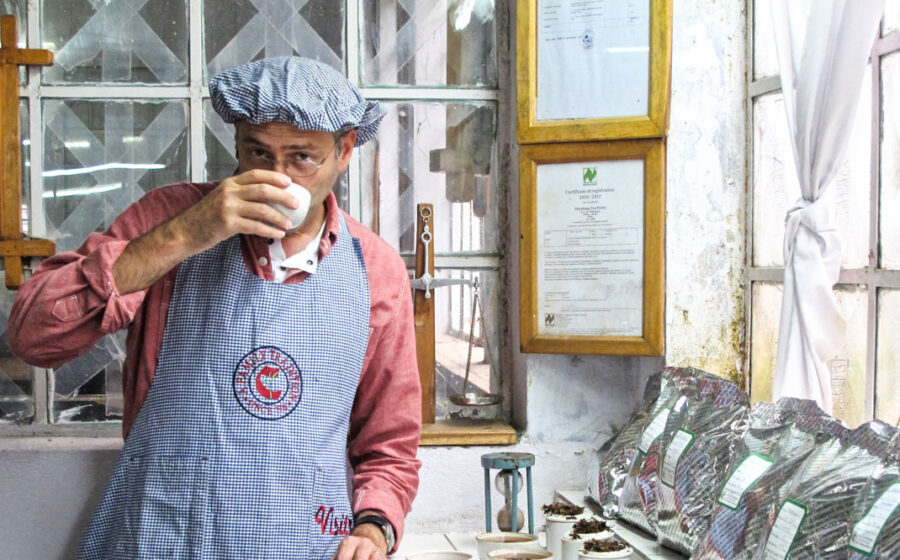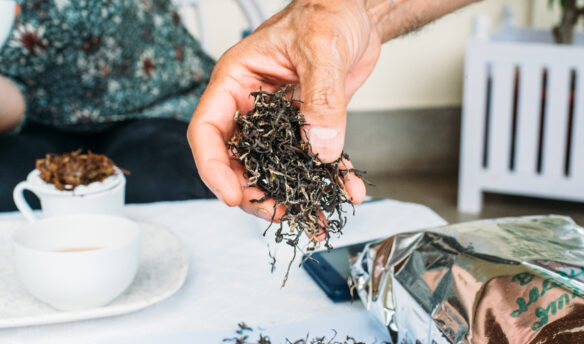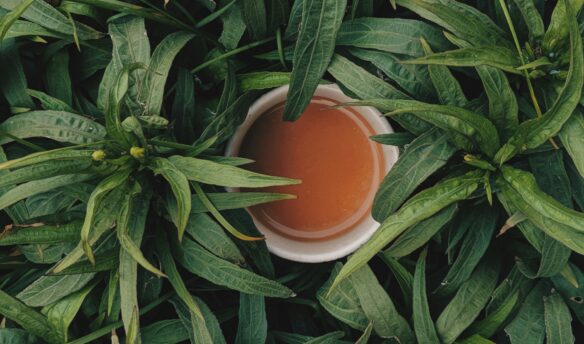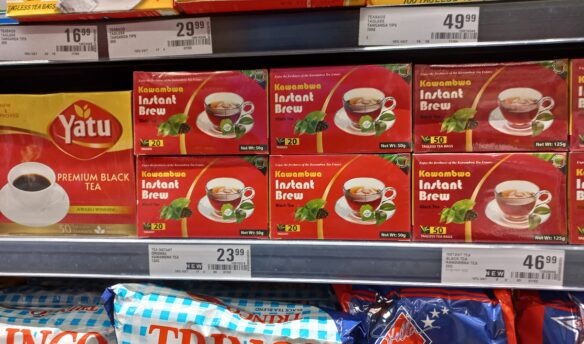[J]eff Koehler first tasted Darjeeling tea when he arrived in the Indian town on a cold winter day during a years-long trip in the nineties. As the tea was presented to him, the simplicity of the service struck him. Throughout his travels in Asia he’d drunk tea served with milk, spices, sugar, or lemon. The Darjeeling was unadulterated and he didn’t miss the additions. Darjeeling was a tea like none he’d had before in a way he’d never experienced.
Darjeeling, as a place, grabbed him as forcefully as the tea. “I’d been to many tea places around the world, but nowhere struck me or intrigued me like Darjeeling,” he says, later explaining the draw is an ineffable combination of its isolation, topographic beauty, history, and the tradition and care of its tea production. More than a decade after that first visit, he returned to write a biography of the area and its tea production. The book, Darjeeling, was published earlier this year, and its subtitle, the Colorful History and Precarious Fate of the World’s Greatest Tea, stakes Koehler as a true believer in the superiority of Darjeeling tea (he’s a first flush adherent), while also expressing his fear that the crop could fade away.

With brisk writing, Koehler traces the beginning of Darjeeling tea production not just back to the smuggling of tea plants out of China by Robert Fortune in the 1840s, but to the beginning of British trading in India and their search for malaria-free retreats. The historical chapters will inform even knowledgeable students of Indian tea, but it’s the chapters devoted to the practices of today’s Darjeeling planters and the challenges they face—climate change and competition for workers—that make the book so insightful.
Why Darjeeling?
I had always wondered why tea is grown there, what makes it so good? In trying to figure out that story, I realized it’s a pretty complicated answer and it has so many elements going into the story that by the end I realized it was a perfect story to tell. I was shocked that nobody else had written a book. From the history, the geography, the terroir aspect, and this small culture that is quite hidden, to these tea estates that have hardly changed how they make tea since the late nineteenth century, it all came together as a way of looking at modern India, a way of looking at certain products that we value but in some ways are dying out.
Were the estate owners, managers, and pluckers interested in having their stories told?
I wanted to see all four flushes, and I was able to. Spending time with planters, like Sanjay Sharma and Rajah Banerjee, and with pluckers, it was with these people I could fully appreciate and understand the industry. People were quite open. Being able to spend days with people on their estates, this is how I understood why Darjeeling tea is so good and those urgent challenges that the industry is battling. You do some of the background, read some of the history, but it wasn’t until I was up there that I realized really the deep challenges it is facing. ‘Wow, absenteeism is forty percent today on your estate? That’s huge! And there’s no way you can get day laborers in?’ That part of the research was fundamental.
It seems that isolation and the high level of craft there are reasons the challenges they face are that much harder than those faced by other tea regions.
The whole structure of the system has created a framework that is almost impossible to fix. You have these estates producing 225,000 kilos of tea, on average; 600 maybe 700 fulltime employees; but maybe five thousand, six thousand, eight thousand people living on the estate. There are very few towns nearby you can get labor from, so when people don’t show up for work because they’ve found something else, they can’t replace those. But because people have lived for generations on the estates, you can’t fire them and kick them off the garden. Labor is the one thing they can, in part, tackle themselves, but it’s, on the other hand, impossible to solve. Education has become such an important thing as a stepping stone to get off of the garden. Then you have TV. Until recently the people who lived on these estates were isolated, and they didn’t necessarily see the outside world. But now they see it, and they say they want more.
Will Darjeeling continue?
It’s tough, but it’s irreplaceable. This is the thing. For all the problems right now, and the numbers being down, the teas are fantastic right now. There’s real passion in Darjeeling tea. When you combine the structure of the estates, that they don’t have access to high population centers like Assam, and, third, that it can’t be automated, you kind of marvel that it could exist in 2015. The argument can be, well who would miss it? But people would. There’s something there. It’s irreplaceable. In a lot of ways, the book is a 300-page explanation of why you should buy the most expensive tea in the tea store.
—Cory Eldridge is Fresh Cup’s editor.















